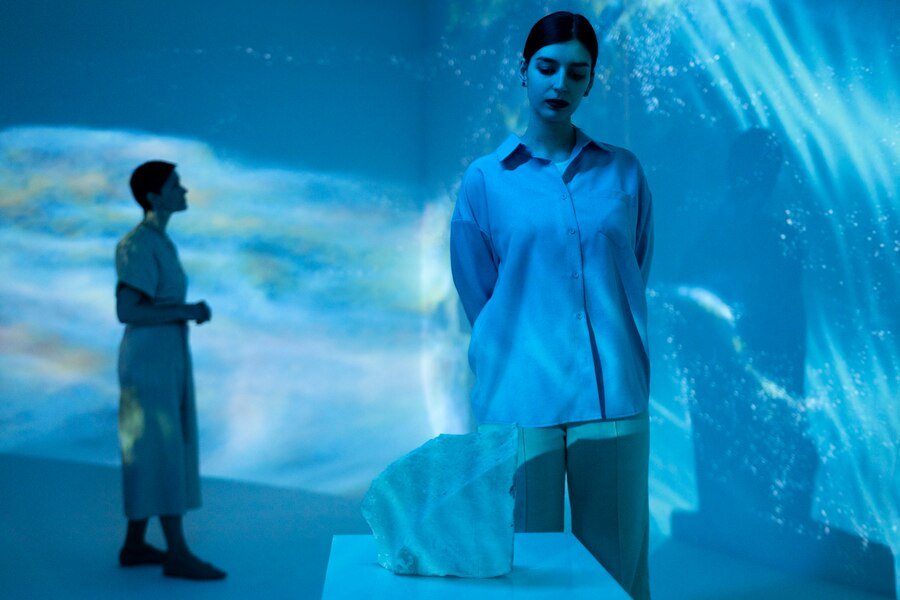Blog
Embracing Wabi-Sabi in Digital Design: A Perfect Imperfection

In a world where digital design often emphasizes precision, symmetry, and sleek minimalism, the philosophy of wabi-sabi offers a refreshing perspective. Rooted in Japanese aesthetics, wabi-sabi celebrates imperfection, impermanence, and the beauty of natural simplicity.
When applied to digital design, wabi-sabi challenges conventional rules by embracing asymmetry, organic textures, and an authentic human touch. This article delves into how wabi-sabi principles can influence digital spaces, creating meaningful and unique user experiences.
Understanding Wabi-Sabi
Wabi-sabi is a centuries-old Japanese concept that emphasizes:
- Wabi: Simplicity, humility, and a connection to nature.
- Sabi: Beauty that comes with aging, impermanence, and imperfections.
It’s a mindset that finds elegance in flaws and values authenticity over perfection.
In the context of digital design, wabi-sabi moves away from pixel-perfect layouts and encourages embracing natural imperfections, creating designs that feel organic, human, and relatable.
Core Principles of Wabi-Sabi in Digital Design
1. Asymmetry and Organic Forms
Wabi-sabi rejects rigid symmetry and instead celebrates irregularity. In digital design, this translates to layouts that feel dynamic and natural, incorporating asymmetrical grids, uneven spacing, and flowing shapes.
For instance, websites with unevenly arranged images or staggered text blocks can create visual interest and evoke a sense of spontaneity.
2. Imperfection as a Design Element
Rather than hiding flaws, wabi-sabi encourages showcasing them. This can be represented in digital design by using distressed textures, hand-drawn elements, or imperfect lines.
For example, a hand-drawn icon set or slightly uneven typography can make a website or app feel more personal and relatable.
3. Natural Color Palettes
Wabi-sabi draws inspiration from nature, often utilizing muted tones and earthy hues. In digital design, this can manifest through palettes featuring soft greens, warm browns, and muted grays.
Natural colors not only align with wabi-sabi principles but also create a calming user experience.
4. Simplicity and Minimalism
Wabi-sabi values simplicity, focusing on what’s essential. Digital designs can reflect this by eliminating unnecessary elements, streamlining navigation, and presenting content in a clear and uncluttered manner.
This approach aligns with modern design trends, such as minimalist websites or clean app interfaces, but with an added layer of warmth and authenticity.
5. Embracing Impermanence
In digital design, impermanence can be reflected through dynamic, ever-changing elements, such as animations, interactive visuals, or seasonal themes. These features highlight the transient nature of online experiences while engaging users.
Benefits of Incorporating Wabi-Sabi in Digital Design
1. Human-Centered Aesthetic
Wabi-sabi introduces a sense of humanity and authenticity to digital spaces, making users feel connected to the design.
2. Unique User Experiences
By breaking free from conventional design norms, wabi-sabi creates memorable and distinct digital experiences that stand out.
3. Stress Reduction
Natural color palettes, organic textures, and uncluttered layouts contribute to a calming user interface, reducing stress for users navigating the digital space.
4. Sustainable Design
Wabi-sabi’s focus on simplicity and minimalism aligns with sustainability principles, emphasizing functional and resource-efficient design choices.
5. Timeless Appeal
Unlike trend-driven designs, wabi-sabi’s timeless principles ensure digital creations remain relevant and meaningful over time.
Practical Applications of Wabi-Sabi in Digital Design
1. Website Design
- Use uneven grids and organic forms for layouts.
- Incorporate earthy tones and textures for a natural aesthetic.
- Opt for hand-drawn illustrations or custom fonts to convey personality.
2. App Design
- Emphasize intuitive, uncluttered interfaces.
- Utilize soft animations and transitions to create a fluid user experience.
- Include natural elements like watercolor backgrounds or irregular shapes.
3. Branding and Visual Identity
- Design logos with hand-drawn or imperfect styles.
- Create branding materials with muted, earthy tones and rough textures.
- Develop packaging or promotional materials that echo simplicity and authenticity.
4. Digital Art and Content Creation
- Use wabi-sabi elements in illustrations, videos, and motion graphics.
- Embrace raw, unpolished aesthetics in visual storytelling.
Challenges of Wabi-Sabi in Digital Design
- Balancing Imperfection: While wabi-sabi embraces flaws, designers must ensure that imperfection doesn’t compromise usability or clarity.
- Cultural Context: Wabi-sabi is deeply rooted in Japanese culture, so its application in digital design should be thoughtful and respectful.
- Client Expectations: Clients accustomed to polished, symmetrical designs may need guidance to understand the value of wabi-sabi-inspired approaches.
Tips for Implementing Wabi-Sabi in Digital Design
1. Start Small
Incorporate subtle elements of wabi-sabi, such as hand-drawn icons or textured backgrounds, before fully committing to the aesthetic.
2. Focus on Functionality
Ensure that simplicity and imperfection don’t hinder functionality or user experience. Balance aesthetics with usability.
3. Emphasize Authenticity
Avoid over-engineering imperfections. The beauty of wabi-sabi lies in its authenticity, so keep it genuine.
4. Test User Reactions
Gather feedback from users to understand how they perceive and interact with wabi-sabi-inspired designs.
5. Learn from Nature
Observe natural patterns, colors, and forms for inspiration. Nature is the ultimate teacher of wabi-sabi principles.
The Future of Wabi-Sabi in Digital Design

As digital design evolves, the demand for human-centered and meaningful experiences grows. Wabi-sabi offers a counterbalance to the perfectionism of modern design, making it an increasingly relevant approach. Expect to see more designers experimenting with organic elements, imperfect layouts, and timeless aesthetics in the years to come.
Conclusion
Wabi-sabi is more than a design trend—it’s a philosophy that resonates with the human spirit. By embracing imperfection, simplicity, and the transient nature of life, wabi-sabi in digital design creates spaces that are not only functional but deeply meaningful.
In a digital world often defined by precision and uniformity, wabi-sabi reminds us of the beauty of being perfectly imperfect. Whether you’re designing a website, app, or digital artwork, adopting wabi-sabi principles can result in creations that connect, inspire, and endure.
-

 Tech1 year ago
Tech1 year agoHow to Use a Temporary Number for WhatsApp
-

 Business2 years ago
Business2 years agoSepatuindonesia.com | Best Online Store in Indonesia
-

 Social Media1 year ago
Social Media1 year agoThe Best Methods to Download TikTok Videos Using SnapTik
-

 Technology1 year ago
Technology1 year agoTop High Paying Affiliate Programs
-

 Tech10 months ago
Tech10 months agoUnderstanding thejavasea.me Leaks Aio-TLP: A Comprehensive Guide
-

 FOOD1 year ago
FOOD1 year agoHow to Identify Pure Desi Ghee? Ultimate Guidelines for Purchasing Authentic Ghee Online
-

 Instagram3 years ago
Instagram3 years agoFree Instagram Auto Follower Without Login
-

 Instagram3 years ago
Instagram3 years agoFree Instagram Follower Without Login





















